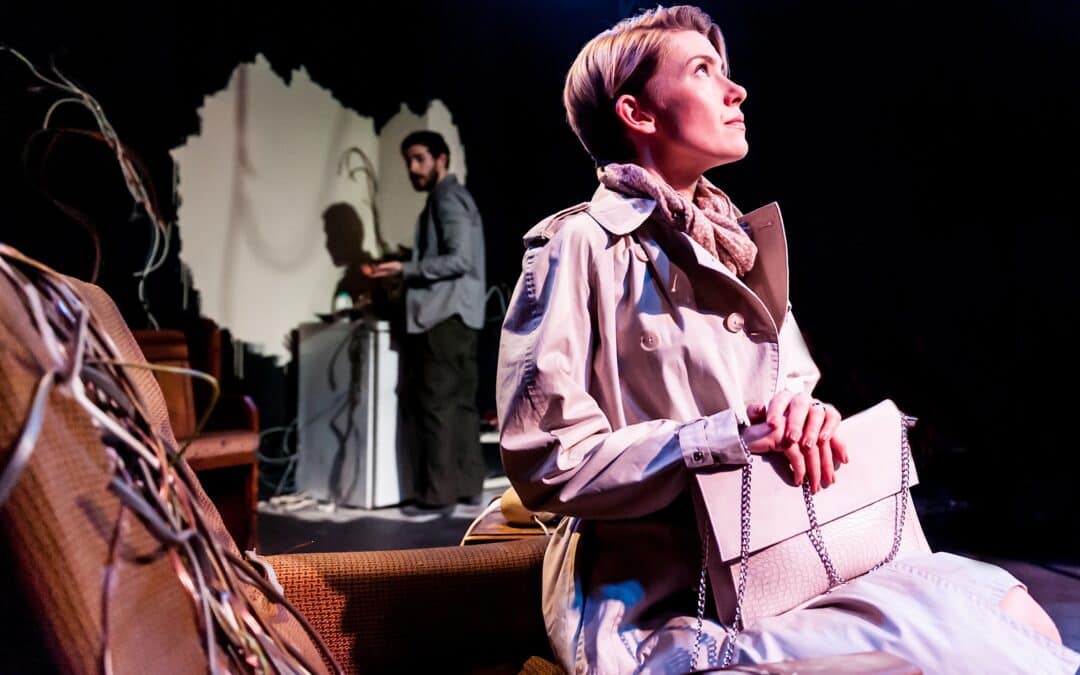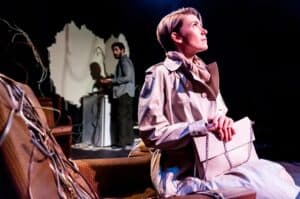There’s a glib and slightly derogatory descriptor for plays that I remember from university, which is that ‘it’s just people sat in rooms talking to each other’.
Whilst that’s a brilliant invitation for getting into writing plays (I think at the very least my first three plays at university were basically just that) it’s also deceptively simplistic. Because if you have an ear and an instinct for writing dialogue, you can absolutely put two or more people in a fictional room and let ‘em rip for as long as you like.
The gags flow, the word-play riffs along, the quips and retorts are witty, the poetry is beautiful and the whole thing now it’s written down on a word-processing programme just looks like a script. Yay!
Except, usually, unless you happen to be exceptionally talented (and people often take recourse to Pinter’s esoteric description of his approach to writing The Homecoming at this point: in short, imagining a bloke asking where the scissors are and taking it from there) – you can’t sustain it.
Things stall. You invent contrivances and huge plot leaps or about-turns in character attitudes, desperate to re-fuel the flow of words because the gearbox at the heart of the story – the plotting – is uncomfortably grinding. You become acutely aware of many brilliant-sounding words and moments, but nothing really happening.
Simon Stephens has commented on more than one occasion that he was told as a young writer – with two produced plays already under his belt at the Royal Court – that his biggest obstacle as a playwright was that ‘he wrote too well’.
What was meant by that was that his plays weren’t wrought yet – he was good at the ‘play’ bit, but not so much at the wright bit: the crafting of dramatic and theatrical storytelling.
In my play Threads (2009, Theatre 503; 2017, Hope Theatre) I knew I wanted to keep two people in one room for seventy-five minutes. The stakes needed to be high enough to keep them in there, but not so high that either of them would ever genuinely seek to break out of it: even when it became deeply unsettling to be trapped in there.
Whatever was holding them in there needed to be embedded deep in whatever I – or they, but without necessarily being conscious of it yet – knew the truth of the situation was for them. This was fuel for dialogue that could always emerge as action.
At the heart of those truths for both of them was also a tiny lie, propping the whole thing up – a fragility to the truth they wanted to believe, that would gradually get wrenched to the surface where they could see it: at which point they’d have to decide how to confront it, however unpalatable that may be.
That wrenching could only come about through action – the act of pulling a truth out of somebody, however much they don’t want to acknowledge it – which is why for me Threads is absolutely a play of actions, not dialogue.
These characters are trying to persuade one another of their own truths whilst convinced that they can second-guess the other’s. They’ll fiercely protect their version of events with one hand whilst happily lashing out with the other.
Words do cut and slash – and seek to connect – but they are all rooted in two arrow-like driving forces for the characters: objectives that they cling to like the possessed. People speak in plays when they want to do something.
Threads is a battle between the truth you speak, and the truth being put right in front of you. It’s choosing which one to agree on that’s the problem.
Threads was recently revived at the Hope Theatre in Islington (11 – 29 April, 2017).
Enjoy this blog? You can receive weekly interviews, articles and vital information on submission opportunities and training courses for UK playwrights every week from Lane’s List.

